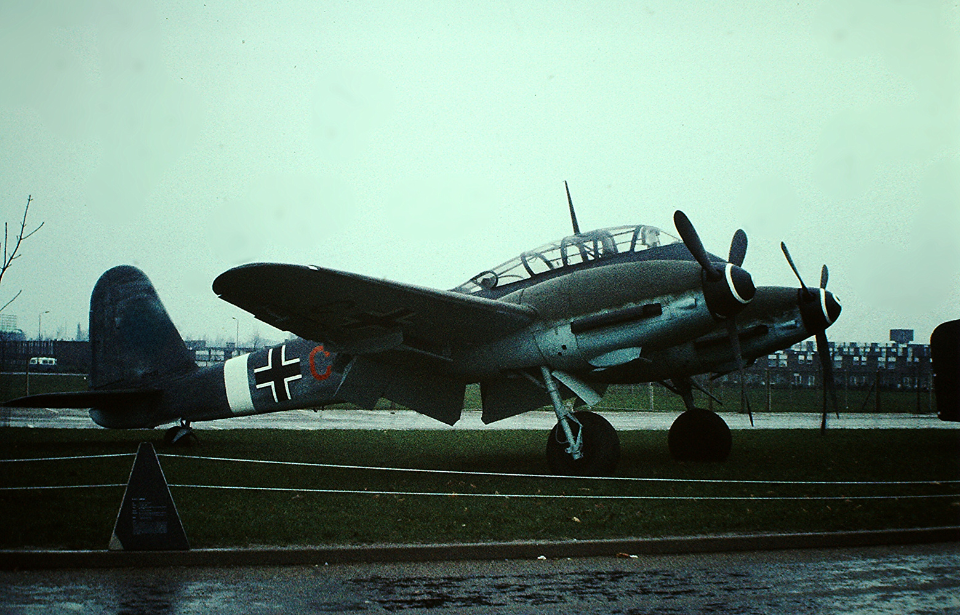The Messerschmitt Me 410 Hornisse was a German twin-engine heavy fighter and bomber destroyer operated by the Luftwaffe during the Second World War. Designed as an improvement upon the Messerschmitt Me 210, it was a highly successful aircraft against Allied bombers. However, it proved to be no match for smaller and lighter fighters.
Development of the Messerschmitt Me 410 Hornisse
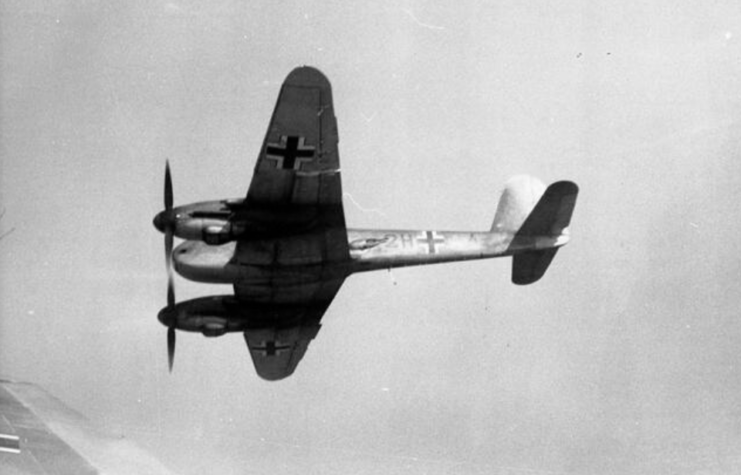
The Messerschmitt Me 210’s development began in 1939. However, the aircraft had significant issues and production was halted after just 90 had been delivered to the Luftwaffe, along with 108 Hungarian-built variants. Modifications were made, resulting in the Me 210C and 210D models, which brought about some improvements.
Despite this, the aircraft as a whole was still aerodynamically flawed. There was another attempt to improve upon the design with the Me 310, but this was in vain. In need of something that would work, the decision was made to develop a new aircraft: the Me 410 Hornisse.
Messerschmitt Me 210 vs. Me 410 Hornisse
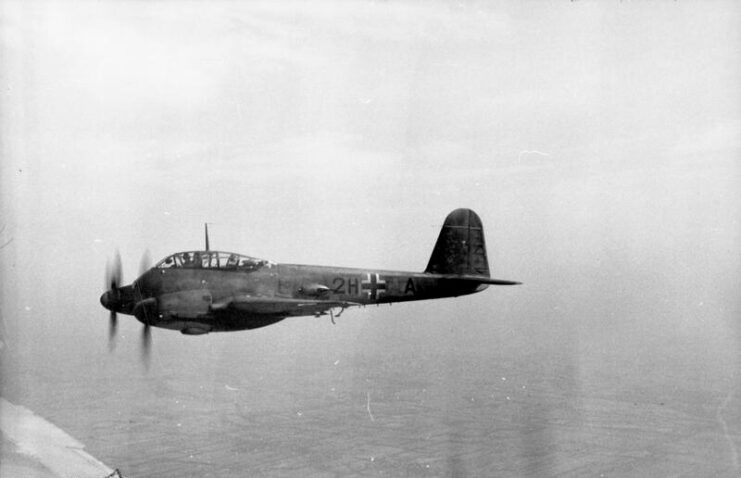
The overall design of the Me 410 Hornisse was seemingly identical to the Me 210. The greatest difference came with the change to Daimier-Benz DB 603A engines. These provided the Me 410 with a significant increase in horsepower, allowing the aircraft to reach higher speeds, as well as achieve a greater rate of climb and a higher service ceiling.
The new engines also allowed the Me 410 to carry a heavier payload; the maximum was actually greater than what could fit in the aircraft’s bomb bay. This was worked around by adding pylons under each wing, allowing for up to four 110-pound bombs to be carried externally. The defensive weapons, operated by a gunner, were congruent between the Me 210 and Me 410.
The fuselage was lengthened and automatic leading-edge slats were added, improving handling. While initial issues existed with Messerschmitt’s leading slats – specifically their tendency to open due to the high angle of attack – they were improved upon, and these early problems weren’t an issue for the Me 410.
The angle of the leading edge of the wing was also significantly straightened. The Me 210 had one at six degrees at the inner wing and 12.6 degrees at the outer. This was significantly lessened to 5.5 degrees from the fuselage to wingtip. These changes made the Me 410 easier to handle.
The Me 410 was produced and delivered to the Luftwaffe between January 1943 and September ’44. By the end of production, a total of 1,189 aircraft had been manufactured, all of which performed well and were liked by their crews.
Messerschmitt Me 410 Hornisse specs
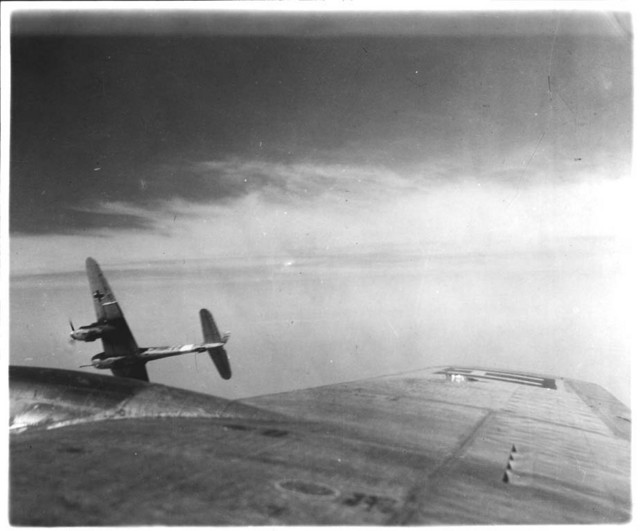
The Me 410 Hornisse‘s overall design made for a less-than-attractive aircraft. A central tandem cockpit for a crew of two sat above the wings, with a canopy broken up into panels. The engines were positioned on either wing, reaching ahead of the main fuselage. The Me 410’s name was accurate, as the overall design does, in fact, look like some kind of insect.
The aircraft could carry up to 2,200 pounds of explosives, including the four aforementioned 110-pound bombs under the wings. The pylons carried four Werfer-Granate 21 rockets. The Me 410 also carried an arrangement of guns, including two 7.92 mm MG 17 machine guns and four 20 mm MG 151/20 cannons. Two 13 mm MG 131 machine guns were located in “side blister mounts” and operated via remote control by the aircraft’s gunner.
Introduction as a night fighter

The Me 410 Hornisse initially operated as a fighter, proving successful in eluding Royal Air Force (RAF) own night fighters. The first Luftwaffe unit to operate the aircraft over the United Kingdom was V./KG 2, which lost its first one on the night of July 13-14, 1943, after being shot down by a de Havilland Mosquito flown by the No. 85 Squadron RAF.
The Me 410 also acted as a bomber destroyer against daytime bombing raids launched by the US Army Air Forces. In this role, they, essentially, attacked bomber formations, with the purpose of destroying the enemy aircraft before they could attack their targets. The Me 410s were successful, scoring a great many kills through 1943.
No match for the Allies’ fighter aircraft
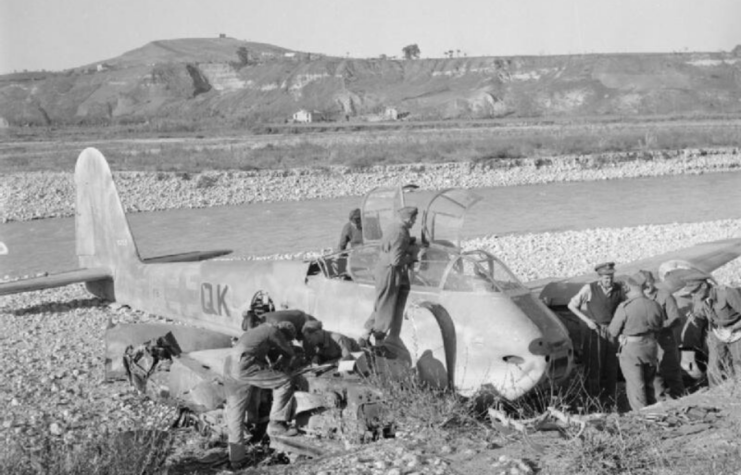
However, the Me 410 Hornisse couldn’t match the agile, light and fast Allied fighters, such as the Supermarine Spitfire and North American P-51 Mustang. In 1944, formations came up against large groups of Allied fighters escorting bombers. They usually took the form of fighters flying ahead of the bombers, clearing the skies of any Luftwaffe aircraft in their path. These encounters saw the Me 410’s success rate drop.
On March 6, 1944, 750 heavy bombers with the 8th Air Force and their fighter escort came up against Me 410s accompanied by Messerschmitt Bf 109s and Focke-Wulf Fw 190s. The encounter concluded in the Americans’ favor. Eight Boeing B-17 Flying Fortresses were downed, and four P-51s taken out by Bf 109s and Fw 190s. In comparison, 16 Me 410s were shot down by the American fighters.
Another example, on April 11, 1944, saw Me 410s down 10 B-17s while suffering no losses. Of note, however, was that there wasn’t any resistance from an escort. A second attack later that day saw the Luftwaffe aircraft intercepted by American fighters. Allied P-51s claimed eight Me 410s and three Bf 110s, killing 16 airmen and wounding three.
By mid-1944, the Me 410 was removed from defense duties and placed in a reconnaissance role, with some seeing service during the Battle of Normandy. Having fallen out of favor, production of the aircraft was ceased, in favor of heavy fighters.
More from us: KAI T-50 Golden Eagle: The Supersonic Trainer That Took Out Rebels In the Philippines
While it had initial success against unescorted bombers, the Me 410 was ultimately no match for the faster Allied fighters.
